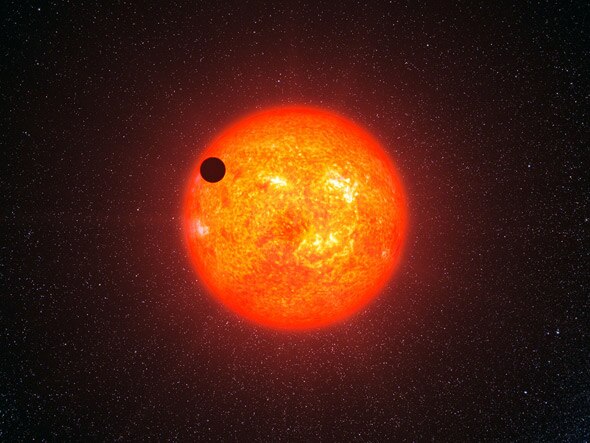Create a free profile to get unlimited access to exclusive videos, sweepstakes, and more!
An Alien World as Massive as Earth … Except Gassier and Puffier

A planet orbiting a star 200 light years away has been found to have the same mass as Earth! However, thatâs about all it has in common with our blue-green world.
The planet is called KOI-314c. The parent star, KOI-314, is less massive and cooler than the Sun. However, KOI-314c orbits it pretty close in, completing one âyearâ in just 23 Earth days. That means the planet is hot, far too hot to have life as we know it. The interesting thing about it, though, is its size: Itâs about 1.6 times the diameter of Earth. That means its volume is about four times larger than Earth (volume increases with the cube of the diameter, and 1.6 x 1.6 x 1.6 is roughly 4). Since it has the same mass as Earth, its density is far less: only about 1.3 times that of water (Earthâs average density is over five times waterâs).
That means the planet must be puffy! Itâs too close to its star to have a lot of liquid water, so to have that low a density it must have a thick atmosphere. We donât know whatâs in that atmosphere, gaswise, but we can be pretty sure itâs there and very deep.
The other interesting thing about this planet is how its density was determined. Itâs actually one of two known planets orbiting the star (the other being KOI-314b). Both transit their star; that is, they appear to pass directly between the star and Earth. When they do, they block a bit of its light, which can be observed using the Kepler observatory (KOI stands for âKepler Object of Interestâ). By seeing how much starlight the exoplanets block, their sizes can be determined.
The masses, though, are harder to get. Usually this is done by observing how hard a planet pulls on its star gravitationally as it orbits; the more massive a planet, the bigger the tug. KOI-314c is too small and distant to measure this effect though, so instead astronomers turned to the other planet. KOI-314b is pulled by KOI-314c, and that changes the exact timing of its orbit. If thereâs only one planet orbiting a star, the orbit doesnât change, but a second planet will cause the other planetâs orbit to vary by small amounts. The exact amount depends on a lot of factors, including the mass of the planet doing the pulling, in this case, KOI-314c.
This is called transit time variations, and itâs a small effect and very difficult to measure. The method of using it to measure exoplanets masses has only been in use a couple of years, but itâs starting to see some successes, including KOI-314c. It may well be that the first truly Earth-like planet will be found or at least confirmed this way!
Interestingly, another team of astronomers using this same technique determined that KOI-314c type planets may be very common. They looked at planets bigger than Earth but smaller than Neptune (so-called Super Earths) using transit time variations and found most of them have a very low density and therefore a thick atmosphere. Smaller planets, though, tend to be far denser, and therefore have much thinner atmospheresâas does Earth.
All of this is fascinating to me, if only for the sheer wonder of the diversity of planets out there. But these other worlds put ours into context. The transit method tends to favor finding massive planets on short orbits, but weâre finding plenty of other kinds of planets this way, and starting to get a census on them. Itâs still hard to say if planets like Earth are rare or not, but either way, what an astonishing thing to even be able to contemplate!
Weâve always wondered if the Earth is unique in the Universe, or as common as sand at the beach. Weâre getting strong hints itâs the latter, but very soon weâll know. And that, my friends, is why science is so cool.














